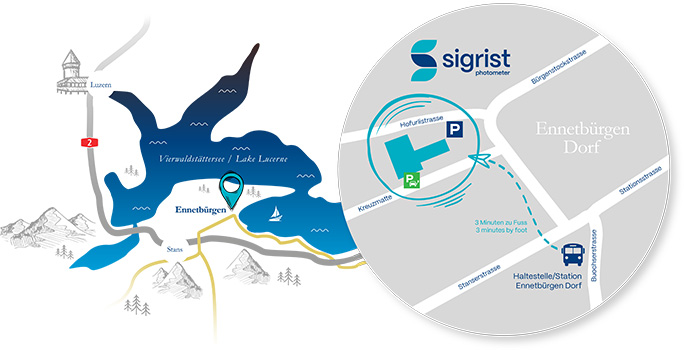Also called turbidity coefficient. Attenuation of the flux of optical radiation as it passes through an absorption-free sample.
The turbidity value can be determined with either of two distinctly different measuring methods, both of which are based on detection of the scattered light:
- measurement of the intensity of the light scattered sideways at a specific angle (scattering intensity);
- determination of the light loss of the transmitted beam (angle = 0°), i.e. the quantity of light withdrawn from the incident beam as a result of scatter
The variable measured by this second method is called the scatter coefficient s. Like the absorption coefficient a, it is defined in terms of the exponential decrease of the light intensity over a path length L:
$I_{\text{out}} \left( z \right) = I_{\text{in}} \cdot 10^{-s \cdot L}$
| $I_{\text{out}}$ |
intensity of the emergent light |
| $I_{\text{in}}$ |
intensity of the incident light |
| $L$ |
path length |
| $s$ |
decadic scatter coefficient |

Fig. 44: Scatter coefficient
In other words, the numerical value of the decadic scatter coefficient corresponds to attenuation down to 1/10 of the incident light. The unit is m-1 The scatter coefficient is a material constant; at a given wavelength, it is always the same for a given suspension. In the case of simple scatter (as opposed to multiple scatter), the figure is proportional to the particle concentration. Generally, the lower the wavelength, the lower the coefficient.
![Absorption [1\m] of formazine as a function of wavelength λ](/library/public/images/abc/EN/Fig_45_EN.min.svg)
Fig. 45: Absorption [1\m] of formazine as a function of wavelength λ
(Concentration = 1 FNU)
Precondition for the application of this method, of course, is that no absorbent substances (colour) are present in the medium that would convert the light energy at the wavelength of the incident beam into heat as a result of interaction with the atoms.
In actual practice this method is used for measuring high turbidities since fine turbidity matter weakens the transmitted light too little and excessively long path lengths would be required. As in the case of scattered light intensity measurement, the instruments are calibrated with the standard suspension formazine. The concentration span utilized in practice ranges from 50 FTU to 20,000 FNU.
As in the case of scattered light intensity measurement, it must be borne in mind here that turbid matter other than formazine has not the same correlation between turbidity value and particle concentration, because the reading is affected by the particle size and the refractive index of the particles in relation to the medium. Solids concentration

![Absorption [1\m] of formazine as a function of wavelength λ](/library/public/images/abc/EN/Fig_45_EN.min.svg)
